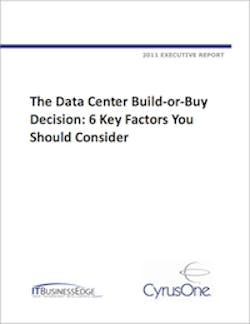Even through challenging economic times, the need for physical data center capacity continues to grow. For some businesses, the driver is expansion into new markets or geographies. For others, its the need to deal with growing amounts of data generated by applications with high-capacity demands, evolving end-user abilities, or regulatory bodies that demand ever-increasing quantities of meticulous documentation. If your data center is running out of space or power, which is increasingly an important constraint you have two options. You can build and operate a new facility, or you can lease the capacity you need from one of a growing number of colocation providers who can solve your problem immediately. Colocation, often referred to as colo, differs from traditional hosting, where the hosting company provides the hardware and some or all of the software required to run your applications. In a colocation arrangement, you own all the hardware, and you typically provide the technicians to support it as well. What you don’t have to worry about is floor space, cooling, power (and its distribution), cabling, fire suppression and physical security.
The build-or-buy decision between construction and colocation should be weighed carefully, as the choice will affect your company and your bottom line quite literally for decades. This paper will review six key factors that affect that choice, some of which extend beyond a basic TCO analysis.
